Filter by
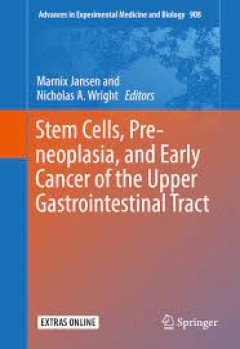
Stem Cells, Pre-neoplasia, and Early Cancer of the Upper Gastrointestinal Tract
This book is a comprehensive understanding of the evolution of pre-malignant disease, emphasizing common themes in the field, including stem cell biology and histologic modes of cancer progression between the distal esophagus and stomach. Its sixteen chapters discuss metaplastic tissue change in the upper GI, clonalexpansion of early neoplasia, stem cell dynamics in experimental models, pathol…
- Edition
- -
- ISBN/ISSN
- 978-3319413860
- Collation
- -
- Series Title
- -
- Call Number
- -

Stem Cells in the Lung Development, Repair and Regeneration
This book presents a comprehensive overview of the current understanding of the organization of endogenous lung stem and progenitor cell compartments during fetal lung development, postnatal lung growth and in adulthood. Progressing stage by stage, the chapters on fetal lung development emphasize the integrated role of epithelial, stromal, vascular and neural cell elements in building a functio…
- Edition
- 1
- ISBN/ISSN
- 978-3-319-21082-7
- Collation
- -
- Series Title
- XIV, 366
- Call Number
- XIV, 366
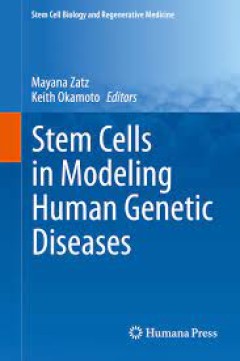
Stem Cells in Modeling Human Genetic Diseases
While most stem cell books focus on basic aspects and/or cell therapy, this book emphasizes the relevance of stem cells obtained from patients, the so-called “patients in a petri dish” as tools to investigate human genetic diseases for which there are no available effective treatment. Chapters embrace several examples of the use of iPS cell technology, a recent Nobel Prize-winning scientifi…
- Edition
- -
- ISBN/ISSN
- 978-3-319-18314-5
- Collation
- -
- Series Title
- 1 b/w illustrations, 15 illustrations in colour
- Call Number
- XII, 147
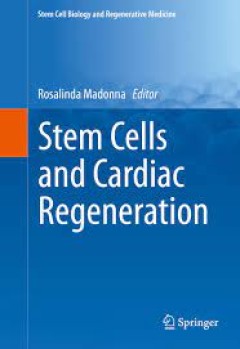
Stem Cells and Cardiac Regeneration
This book provides an update of recent advances in the basic and clinical applications of cell-based therapies for myocardial repair and regeneration in ischemic heart disease (IHD) and heart failure (HF). The first sections of the book illuminate basic aspects of stem cells such as definitions, isolation criteria and characterization of embryonic and adult stem cells, as well as pluripotent st…
- Edition
- -
- ISBN/ISSN
- 978-3-319-25427-2
- Collation
- -
- Series Title
- 8 b/w illustrations
- Call Number
- XXI, 205
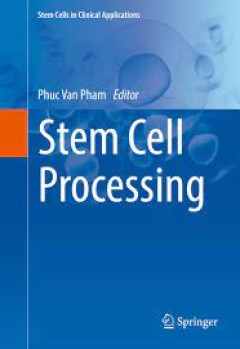
Stem Cell Processing
This invaluable resource delineates procedures for development and use of stem cells in the laboratory and explores the potential for clinical applications. The text discusses mesenchymal stem cell isolation, isolation of adipose derived stem cells, new trends of induced pluripotent stem cells in disease treatment, cord blood banking, future directions of the discussed therapies and much more. …
- Edition
- -
- ISBN/ISSN
- 978-3-319-40073-0
- Collation
- -
- Series Title
- 4 b/w illustrations, 29 illustrations in colour
- Call Number
- XIII, 225

Stem Cells and Cancer Stem Cells
Volume 12 in this series explores the latest experimental and clinical uses of stem cells in the treatment of disease and of injuries and reviews methods for isolating multipotent endothelial-like cells from human adipose tissue and discusses clinical applications in cell therapy and regenerative medicine. The book is organized in five parts: Cancer Stem Cells, Pluripotent Stem Cells, Dendri…
- Edition
- -
- ISBN/ISSN
- 978-94-017-8032-2
- Collation
- -
- Series Title
- 4 b/w illustrations, 28 illustrations in colour
- Call Number
- XLII, 256
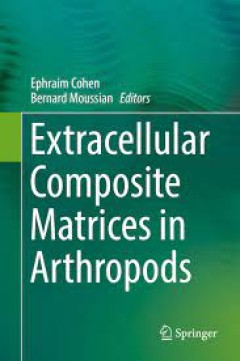
Extracellular Composite Matrices in Arthropods
Emphasis is placed on the elaborate cuticular matrices in insects and crustaceans, spider and insect silks, sialomes of phytophagous and blood-feeding arthropods as well as on secretions of male and female accessory glands. Focus is placed largely on insects, due to the extensive body of published research that in part is the result of available whole genome sequences of several model species (…
- Edition
- -
- ISBN/ISSN
- 978-3-319-40740-1
- Collation
- 39 b/w illustrations, 83 illustrations in colour
- Series Title
- -
- Call Number
- -

Advances in Micro-Bioreactor Design for Organ Cell Studies
Micro-bioreactors offer unique opportunities to study biological systems under fluidic conditions. The concept of micro-bioreactors suggests that biological reaction conditions on a large scale can be scaled down to micro-volumes while maintaining performance and functionality. Models and operation principles can be simulated at a smaller scale, either by scaling down organs in the human body, …
- Edition
- -
- ISBN/ISSN
- 978-3-03897-232-7
- Collation
- -
- Series Title
- -
- Call Number
- 571.6 ADV
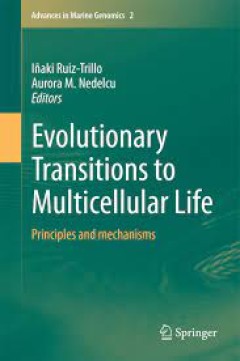
Evolutionary Transitions to Multicellular Life Principles and mechanisms
The book integrates our understanding of the factors and processes underlying the evolution of multicellularity by providing several complementary perspectives (both theoretical and experimental) and using examples from various lineages in which multicellularity evolved. Recent years marked an increased interest in understanding how and why these transitions occurred, and data from various fiel…
- Edition
- -
- ISBN/ISSN
- 978-94-017-9642-2
- Collation
- 40 b/w illustrations, 40 illustrations in colour
- Series Title
- -
- Call Number
- -
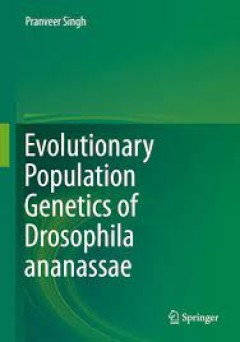
Evolutionary Population Genetics of Drosophila ananassae
This book introduces readers to classical population genetics and the ways in which it can be applied to practical problems, including testing for natural selection, genetic drift, genetic differentiation, population structuring, gene flow and linkage disequilibrium. It provides a comprehensive monograph on the topic, addressing the theory, applications and evolutionary deductions, which are cl…
- Edition
- -
- ISBN/ISSN
- 978-81-322-2565-2
- Collation
- XI, 106
- Series Title
- -
- Call Number
- -
 Computer Science, Information & General Works
Computer Science, Information & General Works  Philosophy & Psychology
Philosophy & Psychology  Religion
Religion  Social Sciences
Social Sciences  Language
Language  Pure Science
Pure Science  Applied Sciences
Applied Sciences  Art & Recreation
Art & Recreation  Literature
Literature  History & Geography
History & Geography